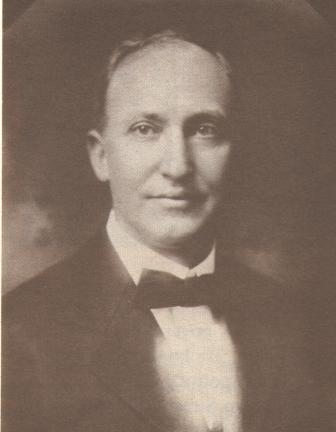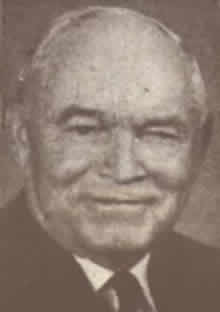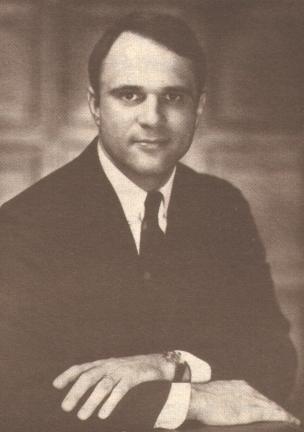George Washington Hays
George Washington Hays was born in Camden, Arkansas on the twenty-third of September, 1863. His father, Thomas Hays, was a farmer and an early Arkansas settler from Alabama. Hays attented school in Ouachita County, then farmed until he was twenty-five. He served as a store clerk and as a teacher for a while, then attended Washington and Lee University in Lexington, Virginia where he received a legal education. He studied law with the Camden law firm of Gaughan and Sifford before he began his own practice of law.
In 1895, Hays married Ida Yarbrough. They had two sons, George Grady and William Francis. William and his wife Adabell have retired and now live in Camden.
Hays was a probate and county judge for Ouachita County from 1900 to 1905. He again practiced law in Camden until 1906 when he began serving as judge of the Thirteenth Judicial District. He resigned before completing his second term, as he was elected governor of the State of Arkansas in 1913.
Major issues during Hays' term as governor were prohibition, para-mutual betting at Hot Springs and women's rights. Under the Hays Administration working hours for women were restricted to a nine hour maximum day and a six day maximum week. The legislature gave women the right to enter into contracts and to own property and submitted to the voters a women's suffrage amendment.
The state Capitol building that stands today was completed while Hays was the governor of Arkansas. The contractors failed to put in marble in the building. Hays refused to pay them until the plaster was removed and replaced with Batesville marble.
Hays left office in January of 1917 and practiced law in Little Rock and Camden. He wrote for national magazines, including Scribners, defending capital punishment.
In July of 1927 Hays contracted influenza; he developed pneumonia and died on September 15 of that year. He was buried at Camden, Arkansas.

Benjamin Travis Laney, Jr.
Ben Laney was born on a small farm in the Cooterneck community in Ouachita County. His father was Benajmin Travis Laney, Sr.; his mother was Martha Ella Soxon Laney. They had eleven children; six of those eleven children received college degrees. Laney himself actually did not finish high school, but his talents were abundant enough to land a teaching job and admission to Hendrix College in 1915. He left Hendrix and joined the Navy in 1918. He returned once again to college, this time attending Arkansas State Teachers College (now the University of Central Arkansas) and received the A.B. degree in 1924. Laney married Lucile Kirtley, a student at ASTC. They had three sons: Benjamin Travis III, William David, and Phillip.
During 1922, oil was discovered on the Laney farm. Laney moved back to Camden and entered the oil business. Other interests were farming, banking, cotton gins, feed, and grocery and hardware stores. He was the mayor of Camden from 1935-1939.
He announced his candidacy for governor of Arkansas in 1944 on the Democratic ticket. He launched his campaign by saying "I am not a politician." His opponent in the primary, J. Bryan Sims withdrew his nomination, and Laney handily defeated his Republican opponent in the general election. In 1946 Laney was elected to a second term with an 84% margin over Republican W. T. Mills.
During Laney's first term as governor, he submitted the revenue stabilization plan to the legislature. He had announced during his campaign to make all state appropriations from a single general fund. This bill passed, and the law's essential features have remained intact to this day. This became Laney's greatest achievement, a monument to fiscal responsibility.
In 1947 Laney obtained appropriations to build an official residence for the governor of Arkansas, stating that the lack of a residence was an embarrassment to Arkansas. War Memorial Stadium in Little Rock was also built during Laney's administratrion. This project had his full support despite strong opposition from some that it would be an "institution of debauchery."
Laney declined to run for a third term in 1948, but was active in politics as the Dixiecrat's chairman. State's rights had come to the fore at this time, and the southern Governors aligned themselves against Harry Truman's call for several measures to abolish racial discrimination. Laney supported the racial segregation, but admitted that the blacks in the South had not been given equal opportunities.
In 1950 Laney challenged Sid McMath, a popular governor of the state of Arkansas. McMath was seeking his second term, and Laney was seeking a third term after the McMath interim. His campaign slogan was "Let's Re-Elect Ben Laney Governor for a Second Time."
After his 1950 campaign loss, Laney remained active and interested in politics. He disapproved of the handling of the integration matter by Orval Faubus, but continued to be a state's rights champion. Following a long illness, Laney died of a heart attack in January of 1977 and was buried in Camden in Memorial Cemetery.

David Hampton Pryor
David Pryor was born in Camden, Arkansas on August 29, 1934. His father, William Edgar was an automobile dealership owner. His mother, Susan Newton Pryor was the first woman in Arkansas to seek public office. She ran an unsuccessful race for circuit clerk in 1926.
As a teenager, Pryor worked in Washington, first as a page for Congressman Oren Harris, and later was a summer staffer in the House of Representatives Post Office.
Pryor graduated from Camden High School in 1952 and attended Henderson State University. He received his B. A. from the University of Arkansas in 1957.
Pryor married Barbara Lunsford of Fayetteville. They are the parents of three sons: David, Jr., Mark, and Scott.
Pryor and his wife moved to Camden after graduation from the University and published a weekly newspaper, The Ouachita Citizen.
In 1960 Pryor was elected to the Arkansas State House of Representatives, where he served three terms. He received his L. L. B. in 1964 from the University of Arkansas School of Law. From 1964-1969 he practiced law with the firm of Pryor and Barnes.
In November of 1966, he was elected to fill the unexpired term of Congressman Harris and went on to serve three full terms.
In 1974, David Pryor was elected to the first of his two terms as Governor of Arkansas, winning against the Republican candidate, Ken Coon.
During his tenure as governor, Pryor's main objective was fiscal responsibility and restraint. His achievements there probably mark his greatest contribution during his administration.
Pryor became a member of the United States Senate in 1979. He is currently chairman of the Agriculture Subcommittee on Agricultural Production and Stabilization of Prices. He is the Chairman of the Special Committee on Aging, and he serves on the Senate Finance Committee. He is a member of the Governmental Affairs Committee and chairman of its Subcommittee on Federal Services, Civil Service and Post Office. He is Secretary of the Democratic Conference, third in the Senate Democratic leadership and serves as a member of the Senate Democratic Steering committee.
David Pryor and his wife live in Georgetown.

Information on the Governors of Arkansas was obtained from Bill Hays, Aletha Rollins and Cornelia Lindsey. An invaluable source was a book entitled Governors of Arkansas, edited by Willard Gatewood, Jr. and Timothy P. Donovan. This book was published by the University of Arkansas Press in 1981.
NOTE: Effort is underway to obtain a more updated and current article on Mr. Pryor for future publication in the Quarterly. Keep watching for the notice of publication, and if you are not a member of the Ouachita County Historical Society, please feel free to fill out the enclosed membership application to become a member and enjoy the benefits of your membership.
|Home|About OCHS|Quarterly|Calendar of Events|
|Ouachita County History|Historic Sites|
|Parade of Homes|Links|


